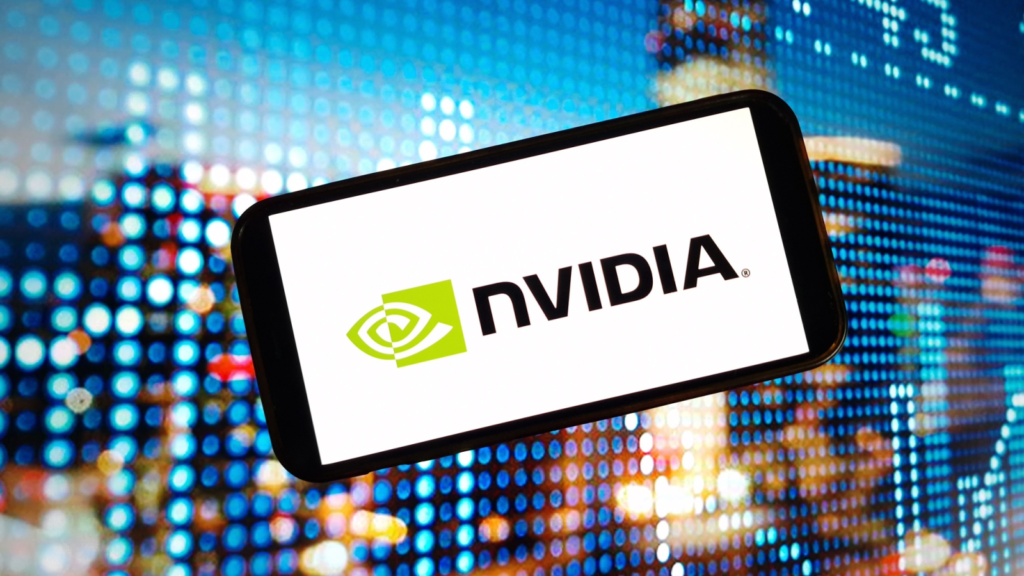Nvidia Stock Earnings Preview: Sorry, Q1 Will Be as Good as It Gets for NVDA.

Nvidia (NASDAQ:NVDA) reports first-quarter earnings after the market close. All eyes will be on just how high demand for artificial intelligence chips drives the chipmaker’s performance, but Nvidia stock may be topping out.
The consensus view is that Nvidia will see a gusher of profits with estimates of as much as $5.60 per share depending upon who is counting. That’s a massive fivefold explosion from last year’s 88 cents per share. Revenue is just as expansive, with Wall Street looking for $24.3 billion, or 238% more than last year.
To put that in perspective, last year’s “blowout” results propelled Nvidia to the doorstep of a $1 trillion valuation. Just 12 months later, the chipmaker is worth almost $2.4 trillion. Adding on almost $1.5 trillion in one year is no easy feat.
It indicates the market is pricing Nvidia stock for perfection. The risk, of course, is if Nvidia falls just shy of the mark or if guidance doesn’t offer the same sort of meteoric gains for the next quarter and the rest of the year.
Nvidia Stock and Peak Performance
Nvidia stock goes for 80 times trailing earnings and 30 times estimates. That implies it will take the chipmaker 30 years to produce enough profits to justify its current market valuation. While Nvidia looks as if it could generate that much, if not more, that is a long time into the future to expect such growth. A lot can change over that time.
At least for the current quarter, Nvidia can still produce another “blowout” result. It’s going to get increasingly difficult as the year progresses, as that is when it will go up against when Nvidia’s sales and profits went stratospheric.
| Quarter | Revenue | % Change |
| Q1 2023 | $7.2 billion | (13%) |
| Q2 2023 | $13.5 billion | 101% |
| Q3 2023 | $18.2 billion | 206% |
| Q4 2023 | $22.1 billion | 265% |
| Q1 2024 | $24.3 billion* | 238% |
What the above table shows is that this quarter is likely to be the last of the mammoth growth spurts. Not that Nvidia’s business is failing, but it just cannot keep growing as it has been. The gains will start looking much more mundane, particularly as we get closer to the back half of the year.
A Cloudy Outlook
The focus this afternoon will be on Nvidia’s data center segment. That’s the unit that houses its AI business. It’s going to get muddled quickly.
The H100 chip was the one that initially launched Nvidia far into the lead of AI semiconductors and is the one the likes of Advanced Micro Devices (NASDAQ:AMD) and others were designing their competing chips to beat.
But Nvidia soon came out with its H200 chips, which were even more powerful than the previous generation and now it will be releasing its Grace Blackwell superchip. They are said to be twice as powerful as the H200. There could actually be a dramatic slowdown in sales until its arrival.
Amazon (NASDAQ:AMZN), for example, has reportedly hit the pause button on purchasing H200 chips, preferring instead to wait for the Blackwell design to be released to market. Other hyperscalers may do the same.
Hold Your Horses
Nvidia has largely gone nowhere since March. Nvidia stock sits 2% below that all-time high. Then, when Super Micro Computer (NASDAQ:SMCI) reported results indicating an industry slowdown might be on the horizon, the entire chip market plummeted.
Even Taiwan Semiconductor Manufacturing (NYSE:TSM) said there were signs the industry may see the brakes being applied, although its own business would be unaffected. TSM, of course, is the world’s largest pureplay foundry and produces the chips Nvidia and others sell.
For that reason I would not be buying Nvidia stock before earnings or even for sometime afterward. Yes, the semiconductor stock might knock it out of the park in the first quarter, and it will keep growing going forward.
But this could be as good as it gets for a while. Investors should wait to see how the dust settles before buying in.
On the date of publication, Rich Duprey did not hold (either directly or indirectly) any positions in the securities mentioned in this article. The opinions expressed in this article are those of the writer, subject to the InvestorPlace.com Publishing Guidelines.









